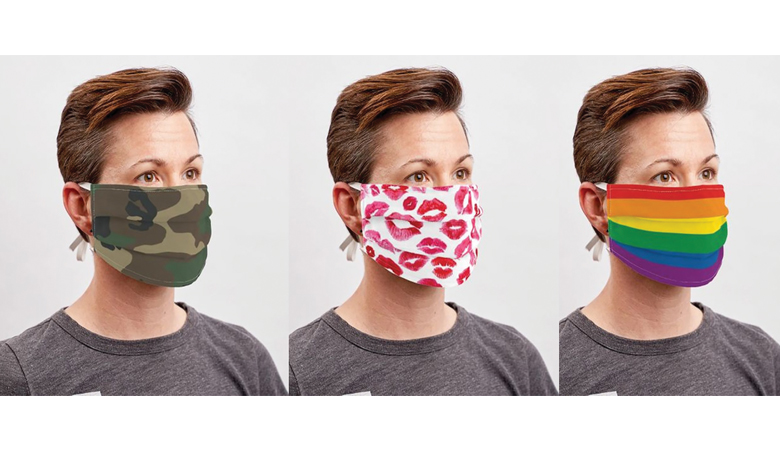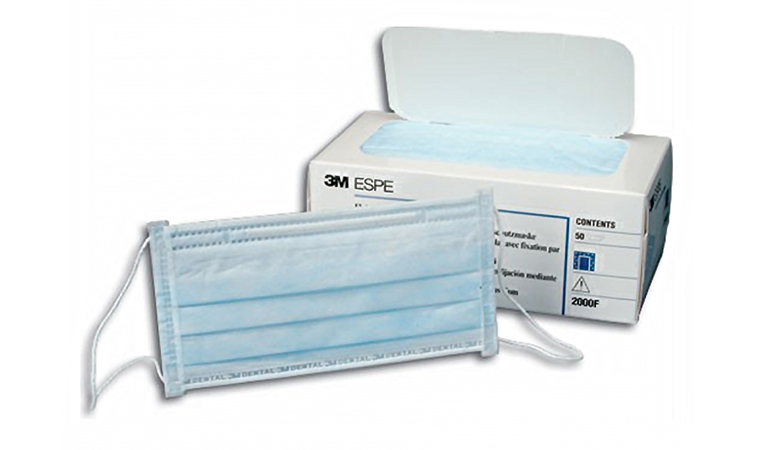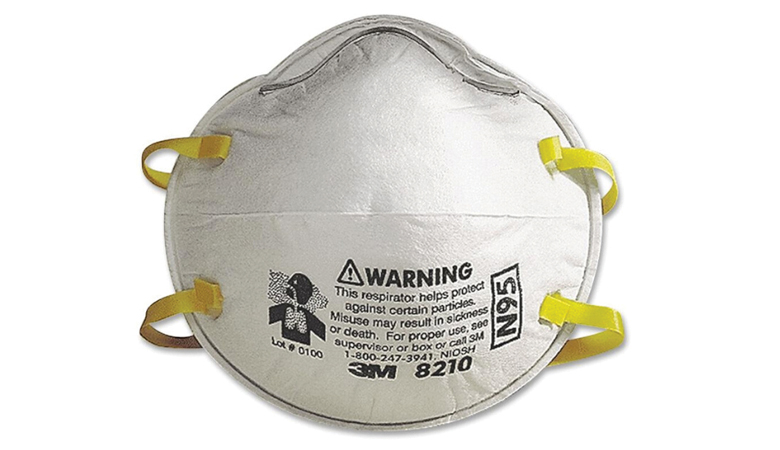How to choose the most effective face covering to mitigate COVID-19.
(Above image compliments of Spoonflower.)
Health experts unanimously agree that wearing a facial covering is a key element of coronavirus-mitigation strategies. The CDC recommends all people two years of age and older wear a cloth face covering in public settings and when around people that don’t live in their household, especially when other social distancing methods are difficult to maintain. But there has been limited information readily available to the general public regarding which facial coverings are most effective. In addition, many companies are using slack time during the pandemic to produce masks for their staff and for sale, we reviewed the latest research on masks. If you are one of those companies, are you providing the best possible solution?
The virus is primarily transmitted through what scientists call Flugge droplets, the droplets produced by humans coughing or sneezing—or even talking, singing, or other activities where breath is expelled. These droplets measure 0.5 to 10 microns. For reference, a human hair ranges from 80 to 100 microns, so these droplets are tiny. But not as tiny as a virus particle, which also spreads the disease primarily by becoming airborne and inhaled. These particles are spheres with diameters of approximately 0.125 microns. A facial covering blocks ingress or egress of Flugge droplets and, to some extent, virus particles themselves, thus reducing the viral load a person experiences and reducing the likelihood of being infected, infecting others, and according to some experts, reducing the severity of the disease if a person is infected.
Florida Atlantic University conducted an experiment to show how a mask affects the travel of droplets from a cough. In their study, they found that the Flugge droplets travel 12 feet in 30 to 40 seconds, twice as far as recommended by social
distancing guidelines! The cloud of droplets becomes less dense the further out it goes. According to Dr. Sid Verma, assistant professor at Florida Atlantic University, at nine feet, these droplets can linger in the air for two to three minutes. Still, the concentration is less than it would be at six feet by a factor of eight. (Above image compliments of Spoonflower.)
(Above image compliments of Spoonflower.)
Florida Atlantic University’s experiment revealed:
- A bandana (or a gaiter-style mask) is the least effective, with droplets traveling three feet.
- A folded handkerchief resulted in droplets traveling one foot three inches.
- A cone-style mask reduced the distance to about eight inches.
- The best result for cloth face masks was achieved with two layers of fabric, traveling only 2.5 inches.
Keep in mind that we are discussing Flugge droplets, not the airborne virus itself. To prevent ingestion of viral particles with any certainty, a medical-grade PPE is required, such as an N95 respirator mask. Researchers believe that viral particles can remain suspended in the environment for some time. Experts say there is less risk of infection from these particles outdoors or in a well-ventilated and/or filtered indoor environment. Medical-grade PPE, while not in as short of supply as in the early days of the pandemic, should be reserved for first responders and healthcare workers, or for use by people
with co-morbidities (underlying health conditions that increase likelihood of infection and severe disease).
Researchers at the National Institute of Standards and Technology have also looked at the effectiveness of various fabric types used in the construction of cloth face masks. Synthetic fabrics performed the worst, while the best performing cloth masks were two or more layers of tightly woven cotton fabric with one layer having a visible raised nap, like flannel or fleece. Some masks have a built-in pocket that allows the insertion of filter material, which can also enhance functionality. Some masks have valves or vents, and are comfortable because humidity is expelled through the valve. This may be especially convenient to wearers of eyeglasses, helping to prevent fogging. But they also expel particles which can infect others, so they are not recommended for protection against COVID-19. The full report can be found here in case you want to dig into the data.

Above image compliments of 3M.
Some masks have a built-in pocket that allows the insertion of filter material, which can enhance functionality. Some masks
have valves or vents, and are comfortable because humidity is expelled through the valve. This may be convenient to wearers of eyeglasses, helping to prevent fogging. But they also expel particles which can infect others, so they are not recommended for protection against COVID-19.
Let’s look at the various masks and the relative effectiveness of each.
- N95 respirator masks are primarily used by first-line healthcare workers to protect them from airborne particles and liquid. These require fitting to the individual to make sure there is no leakage. As the pandemic continues to take its toll, it is recommended that these masks be reserved for healthcare workers. The N95 mask filters down to 0.3 microns. According to research, the COVID-19 particle is around 0.1 microns, but it is usually bonded to something larger, such as a Flugge droplet, making N95 masks effective in blocking these particles. But filter size is not the only thing that makes an N95 mask effective. Watch this video for a clear explanation about the science behind N95 masks: https://youtu.be/eAdanPfQdCA.
- Surgical masks are loose-fitting disposables like you’ve seen in your doctor’s or dentist’s office. They come in different thicknesses and with different levels of protection. They have a loose fit, and according to the FDA don’t filter or block very small particles in the air.
- Cloth mask are recommended to be at least 2-ply and made of cotton fabric.
There is still a great deal that is unknown about the virus that causes COVID-19, and a great deal of research and development continues on all aspects of the virus, including more research into the efficacy of face coverings and how they can be improved. Currently, planarTECH and IDEATI are researching creating masks that uses graphene and other carbon nanomaterials that have antibacterial/antimicrobial properties. Other researchers are experimenting with masks infused with silver and/or copper, long known for having some antimicrobial characteristics.

Above image compliments of 3M.
Masks are likely to be with us for the long haul, especially in the United States where the virus is rampant with no clear
end in sight. The important thing is to wear a mask and to choose a mask style that is comfortable and aligns with your
persona. If you are looking for stylish masks that can be coordinated with your wardrobe, there are plenty of options from
folks like Spoonflower, VistaPrint, and others, or you can even make your own. There are plenty of YouTube videos with
instructions for sewing your own masks or you can take advantage of Spoonflower’s DIY kits.
Be sure to wear the mask correctly: Experts say the mask needs to cover your nose, mouth, and chin to provide the least possible amount of leakage and the best protection.
Access Related Content
Visit the www.thecannatareport.com. To become a subscriber, visit www.thecannatareport.com/register or contact cjcannata@cannatareport.com directly. Bulk subscription rates are also available.

